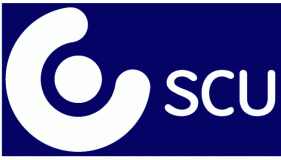Blog Archives
Never say never again…
After my PhD viva in 2004, I promised myself I’d never again study for a qualification. Having gone straight from A-levels through a degree to a doctorate, I felt as if I just couldn’t learn anything more. But a decade later, I found myself at a career crossroads trying to figure out what to do at the end of my maternity leave.
Inspired by my elder daughter’s curiosity, I set up a blog, Simple Scimum, to answer questions about science and nature. Slowly, as the blog gathered followers, my confidence grew; and when one of my daughter’s friends asked if I would answer her science questions too, I knew I had to turn science writing into something more than a hobby.
I began searching for jobs that involved writing about science and quickly realised that a qualification in science communication would be an advantage. So, I googled ‘sci comm Bristol’ and found UWE’s MSc in Science Communication, which sounded brilliant but was more than I could manage whilst working part-time and looking after two young children. However, the Postgraduate Certificate in Practical Science Communication was exactly what I was looking for: a one-year, part-time course with intensive teaching blocks, offering hands-on experience and links to industry. I applied for the September 2016 intake and won a bursary towards my tuition fees: I was going back to university!
I felt nervous about returning to study after such a long break but I knew that this was just the first step along a new career path.
The ‘Writing Science’ module was an obvious choice, with the opportunity to create a magazine and develop a portfolio just too good to miss. I learned the essential elements of journalistic practice and wrote a bylined article for UWE’s Science Matters magazine. But the real highlight was a three-hour workshop on ‘how to write a book’ – I’d love to write science storybooks for children, and came away bursting with ideas, enthusiasm and an action-plan to turn my dream into reality. (Roll on NaNoWriMo…!)
But it was through the ‘Science in Public Spaces’ module that I discovered just how strongly I want to inspire young children and engage them with research. I designed ‘Simon’s Box’ to talk about genetic disease and genome editing with GCSE pupils in local schools. And I had the best time in the Explorer Dome learning about science shows for young audiences. Seeing how to encourage children to learn through stories and play was a fantastic experience and a seminal moment in my desire to become a science communicator.
At times I found it hard to juggle study, work and childcare but the intensive teaching blocks made it easier for me to attend lectures and workshops. I paid for my younger daughter to go to nursery for an extra morning each week and used that time for reading and research. Still, I often found myself studying between 8pm and 10pm, when the kids were tucked up in bed, and I was grateful for 24-hour online access to UWE’s library facilities. But now the hard work is over and I’m just waiting for my final results.
Over the past year, I’ve been part of a supportive cohort of students who are committed to science communication. I’ve developed the confidence to pursue a new career path and given up my old job to become a Research Fellow in UWE’s Science Communication Unit. Before the PGCert, I dreamed of working in science communication but now I’m actually doing it.
Kate Turton
Postgraduate Science Communication students get stuck in on ‘Science in Public Spaces’
Emma Weitkamp & Erik Stengler
September saw the lecturing staff at the Science Communication Unit welcoming our new MSc Science Communication and PgCert Practical Science Communication students to UWE and Bristol. It also sees the start of our refreshed programme offering, which includes significant changes and updates to two of our optional modules: Science in Public Spaces and Science on Air and On Screen.
The first three-day block of Science in Public Spaces (SiPS) marks the start of a diverse syllabus that seeks to draw together themes around face-to-face communication, whether that takes place in a what we might think of as traditional science communication spaces: museums, science centres and festivals or less conventional spaces, such as science comedy, theatre or guided trails. Teaching is pretty intense, so from Thursday, 29th September to Saturday, 1st October, students got stuck into topics ranging from the role of experiments and gadgets to inclusion and diversity.
Practical science fair
Thursday, 29th September saw the 13 SiPS students matched with researchers from the Faculty of Health and Applied Sciences. Students were introduced to cutting edge research and have been challenged to think about how this could be communicated to the public in a science fair setting. Each student will work with their researcher to create a hands-on activity which they will have the opportunity to deliver to the public at a science fair to be held during a University Open Day in the spring.
Towards the end of the three days a session on creativity generated intense discussion about how we might judge what creativity is through to practical techniques and tips we might use to stimulate creative thinking. The session included a word diamond (McFadzean, 2000), where groups considered how you might foster engagement and enjoyment amongst blind visitors to the Grand Canyon, how blind visitors could be involved in creating a sensory trail (for sighted people) at an arboretum or how to enable a local community to be involved in decision making around land use that involved ecosystem services trade-offs. Challenging topics that draw on learning from earlier in the week.
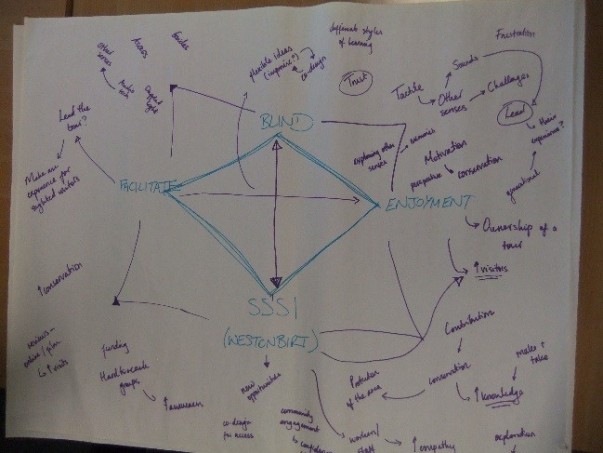
After a final session on connecting with audiences, students (and staff) were looking a little tired; three days of lectures, seminars and workshops is exhausting. We hope students left feeling challenged, excited and ready to start exploring this new world of science communication and public engagement and that they find ways to connect their studies with events and activities they enjoy in their leisure time – though that might not apply to the seminar reading!
Science in Public Spaces got off to an excellent start, thanks to the students for their engaged and thoughtful contributions in class. Up next is the Writing Science module, where Andy Ridgway, Emma Weitkamp and a host of visiting specialists will be introducing students to a wide range of journalistic techniques and theories. Then it will be the turn of the new Science on Air and on Screen where Malcolm Love will introduce students to techniques for broadcasting science whether on radio, TV or through the range of digital platforms now open to science communicators. Looks to be an exciting year!
McFadzean, E. (2000) Techniques to enhance creativity. Team Performance Management: An International Journal, 6 (3/4) pp. 62 – 72
The long and winding road to science journalism
How do you get your first job in science communication? That’s not a straightforward question to answer – when it comes to science journalism at least. My experience of working in the industry showed me that having some kind of experience – either in the form of a placement or a few articles published – can be invaluable. Just as important as any qualification, in fact. And if you’ve won some form of recognition for your writing – perhaps through a competition – that can have a big impact on your job prospects too. It’s probably not too much of an exaggeration to say that there are as many routes into science writing as there are science writers.
It’s out of this experience that the UWE SCU Science Writing Competition was born. Targeted specifically at those who haven’t had popular science writing published before, it is now in its second year.
Given its target audience of new writers, this year we (the SCU that is) decided to provide writing advice in the form of blogs from the judges and other respected science writers, including one of last year’s winners – Emily Coyte .
There were another couple of important additions too, including a partnership with the Royal Institution – an organisation with a track record for nurturing new talent – and a survey of the competition participants aimed at gaining a fuller picture of the opportunities and barriers they face in breaking in to the science writing industry. The survey makes for interesting reading.
For starters, all of the 49 people who took part in the survey (out of roughly 90 competition entries) said they were interested in a career in science writing in some form – some as full time writers or editors and others envisaged writing as a sideline to a career in research science. Many participants were students and most (almost 90%) had not had any form of science writing training. Of those who hadn’t had training, a fairly high proportion (45%) said they were not aware of any training courses.
However, it’s where the responses to this survey – from those who want to be science writers – are compared with the responses from another survey we conducted – from those who are already science writers – that things get really interesting. But this isn’t the place to go into any detail on that – there will be more on that later. So watch this space…
As for this year’s science writing competition, the shortlist has now been drawn up and the judges will meet in August to decide the winners, who will be announced on 1 September 2016.
Andy Ridgway
Science Writing Competition now open
It’s been a busy few weeks in the office getting ready for the UWE Bristol SCU Science Writing Competition 2016. We are looking for 700 words on “the next big thing in science”.
Entrants can be residents anywhere in the world, but must be non-professionals (professional journalists and anyone else who writes for money). All others, including scientists and bloggers, are welcome to apply. There are no residency restrictions, and we have separate categories for under 18s and over 18s. Closing date for applications is 24th June 2016. For full details, please see the SCU website.
We’re excited to have an impressive judging panel on board, who’ve prepared some excellent tips for new science writers. Fascinating stuff for newbies and old-timers alike.
The competition is run by UWE Bristol’s Science Communication Unit (SCU) in partnership with BBC Focus magazine and the Royal Institution.
Behind the scenes at Bristol Museum
Text by Andy Ridgway, Senior Lecturer in Science Communication, images by Marta Palau Franco, euRathlon project manager.
“Artists love this kind of thing,” says Bonnie Griffin, Natural History Curator at Bristol Museum & Art Gallery. The thing in question is a scrawny-looking taxidermy pigeon that’s a victim of moth strike. The moths have stripped away the ‘feathery bits’ of its feathers, the barb, to reveal the rachis – the pointy bits in the middle.
He – or she – was introduced to students on our Masters and Postgraduate Certificate in Science Communication during our tour of the Museum’s natural history store, somewhere that’s normally off limits to members of the public. The tour was part of a day spent at the Museum to get an insight into the inner workings of a museum with a vast natural history collection.
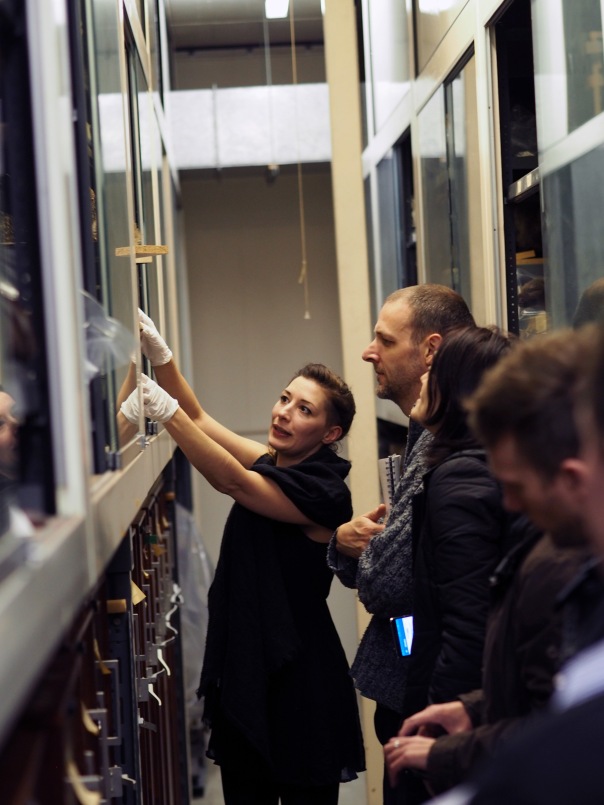
Natural History Curator Bonnie Griffin shows our MSc students some of the extraordinary taxidermy in the natural history store
The pigeon may be one of the less exotic residents of the store but it illustrates the two principle challenges of having such a huge resource; how to make use of a valuable resource when display space is at such a premium and how to stop the objects themselves being eaten or decaying in some other way.
The store has 650,000 residents – all of them dead – and this represents 90-95 per cent of Bristol Museum’s natural history collection. This means there’s only space for 5-10 per cent of the collection to be on display at any one time. It’s not an uncommon problem (and has prompted some at other institutions to consider drastic action).
But ways are being found for the store’s residents to earn their keep. So while the scrawny pigeon is making its living as an artist’s muse (the shiny tropical beetles are popular too), other residents are the object of scientific study. A humming bird, for instance, is giving us a clearer picture of what dinosaur plumage was like – apparently the way the colour and shine are created is the same as would have been the case in dinosaur feathers.

Mysterious samples make up some of the 650,000 items in the collection
It is Bristol’s history that has led to such a vast collection – its wealthy merchants of past years would pay for specimens from exotic lands to be brought to our shores. And the museum’s proximity to Bristol Zoo is another factor – several of the zoo’s inhabitants have taken up residence in the museum once they have died. Among them is Henry the orangutan, who once shared a cage with his orangutan sweetheart, Ann, at the zoo. Today, the store is taking in fewer new residents and rather than coming from far flung corners of the globe, most of it is roadkill.
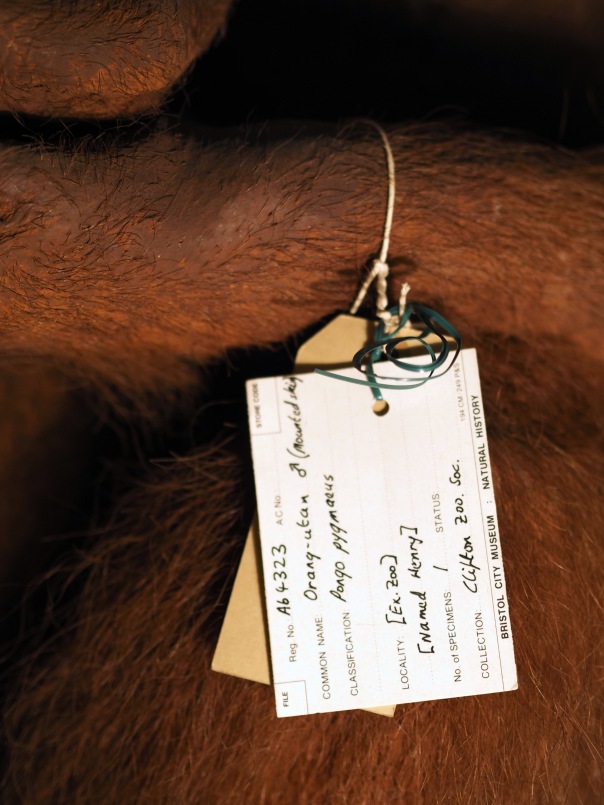
Henry the orangutan, formerly a resident of Bristol Zoo.
While moth strike is one of the threats to the natural history collection, pyrite decay (where the sulphite component of the mineral oxidises) is one of the – if not the – biggest threats to the collection in the museum’s geology store. So temperature and humidity down here are continually monitored. In the geology store we were given a guided tour by Senior Natural History Curator Dr Victoria Purewal.
Again it’s the detail known about some of the objects that helps bring them back to life. Take fossil of Pliosaurus carpenteri, that sits on one of the shelves and is the only known example of this species (it’s named after Simon Carpenter, who discovered it at Westbury clay pit in Wiltshire). Thought to be a female, it would have suffered from excruciating toothache in the final years of its life – its fossilised remains revealing signs of a tooth abscess.
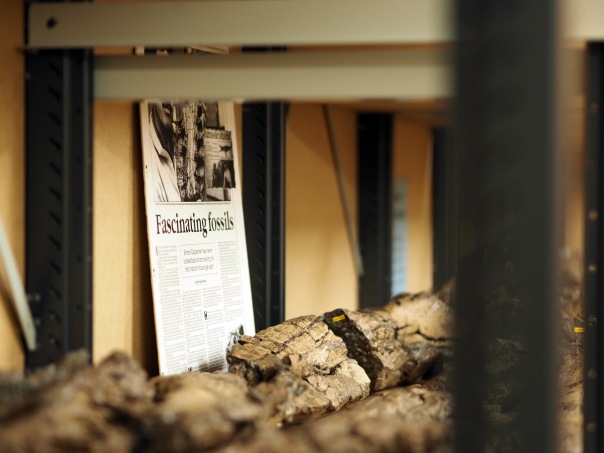
Shelves of fossils, some of them unique finds, in the Bristol Museum store.
Thanks to the staff at the museum for such a fascinating insight into their work – it was a valuable day out for our students.














